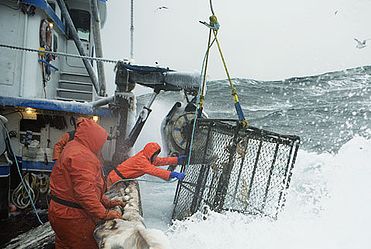After more than 30 years of relentlessly commuting 30 to 60 minutes each way to and from work, that all changed in 2020 and 2021 due to the pandemic and the temporary (permanent?) shift to working remote. While saving time and gas, and feeling better about reducing my personal carbon footprint on the planet, it once again took away my perfect opportunity to consistently listen to audio books each day. Nevertheless, I still managed to find some time to listen to a few titles this past year, and I was always glad I did. In fact, one of the replacements I found for commuting-and-listening to audio books was hoeing-weeds-and-listening to audio books. It seems like the perfect balance doing something useful. productive, and healthy, while not too miserable or strenuous. Here are my titles for 2021:
`Small Business for Dummies
by Eric Tyson and Jim Shell. 2019, 464 pages
This book was awesome! And yes, that is probably surprising to hear, and was surprising to me. Much of the material is focused directly on the endeavor of starting a personal small business, and all of the practical and essential things one needs to know and be aware of. In addition however, the book is packed with wisdom and insight that could be valuable for any facet of life. Everything from integrity, to self-discipline, to work ethic, to balancing caution and risk : it’s all in here, and spoken from the heart of two people with a lot of experience gained from both successes and failures. I’m really glad I took the time to listen to this book.
`Leadership Strategy and Tactics
by Jacko `Wilink. 2020, 320 pages
I was introduced to Jacko Wilink thru a podcast Andre recommended listening too. I was completely impressed by Jacko’s story of his journey though the Navy Seals, and his work to promote leadership, integrity, and excellence in organizations and businesses. The podcast was three hours long, but I still wanted more, so I bought the book. It was well worth it, and one of those books you could probably read two or three times and still gain value each time though. My favorite part was his remarks on yelling at the people under you in any organization. If you’re a good leader, yelling at someone should almost never happen. He said that in his whole career in the military and running multiple large commercial businesses and organizations, he could count on one hand the times he had to actually yell at one of the people under him, and when he did it had an impact. They understood him clearly and perfectly. He said he never had to yell at anyone twice. I can totally understand that!
`The Real Anthony Fauci : Bill Gates, Big Pharma and the Global War on Democracy and Public Health
by Robert F. Kennedy Jr. . 2021, 480 pages
This book would probably be characterized by many people as a conspiracy theory written by a fringe promoter of wacky nonsense. I would have thought the same, except for things I would hear that one by one didn’t quite line up with this narrative. For example, Robert Kennedy Jr. played a key role in the litigation against DuPont which led to the 2019 movie Dark Waters. Hero yesterday, villain today? The more people shouted him down, the more curious I became regarding what he was actually saying. I finally decided to get the book. What a surprise it turned out to be. I thought it would be a detailed long form commentary on the events of the current pandemic starting in 2020. Instead, most of the book is an account of the history of public figures, pharmaceutical companies, and government institutions going back to HIV/AIDS crisis of the 1980’s. The details Kennedy describes are shocking to say the least, yet the entire book is written almost like a research report with every statement cited and referenced. I can see how it could be hard for someone to believe many of the things covered in the book, yet I can see how it could be hard for an honest person to deny the events, facts, and historical record recounted by the author. I highly recommend this book, and admire Robert Kennedy Jr.’s courage to tackle these subjects in the current environment we are living in.
`On the House
by John Boehner. 2021, 288 pages
This book made me feel great about being and American. We live in a country where a regular person from humble beginnings can make it to a position of one of the most powerful people in the world, and then descend back down to the level being an ordinary citizen once again. I felt a real honesty in his words, and a sincere desire to share the insight he gained over his years in office, and I sensed his hope that he could inspire future generations to cherish the values and institutions we have as Americans. I loved hearing his stories about golfing with (or against) Bill Clinton and Barak Obama. Obama was completely serious and extremely focused, while Clinton was Mr. Fun but also had to be watched closely for any counting or scoring irregularities. After reading the book, John Boehner comes across as extremely proud of his service and successes, yet honest and self-reflective about the times and places he came up short. I really enjoyed listing to this audio book, read by John Boehner himself.
The Gulagh Archipelago 1918-1956 – Abridged
by Aleksandr I. Solzhenitsyn. 1973, 471 pages
This famous book details the nightmare and insanity that had overtaken the Russian people and the entire Soviet Union for some 40 years from the beginnings of the state under Lenin in 1918, until the death of Stalin in 1953. The original book was secretly written in three volumes over a period of ten years, from 1958 to 1968, and finally published outside the Soviet Union in 1973. Some 40 years later, the book would become required reading within the Russian school system, a testimony to the truth of the material. Solzhenitsyn himself had served 8 years in the Gulag from 1945 to 1953 for simply writing some derogatory remarks about Stalin in a private letter to a friend. Some of the book seemed repetitious and redundant as he detailed story after story of arrest and processing through the notorious penal system. What I found most interesting though were his thoughts and insights on humanity as a whole. He tries to understand how a society could descend to such depths of utter evil, and what kinds of individuals could go along with such a system. He calls out the dangers of people who simply don’t care about truth, and will willingly conform to the powers that control them and long as they themselves are rewarded. It’s sad, scary and frightening to see these societal tendencies repeat themselves in short span of time since the Gulag system ended.





